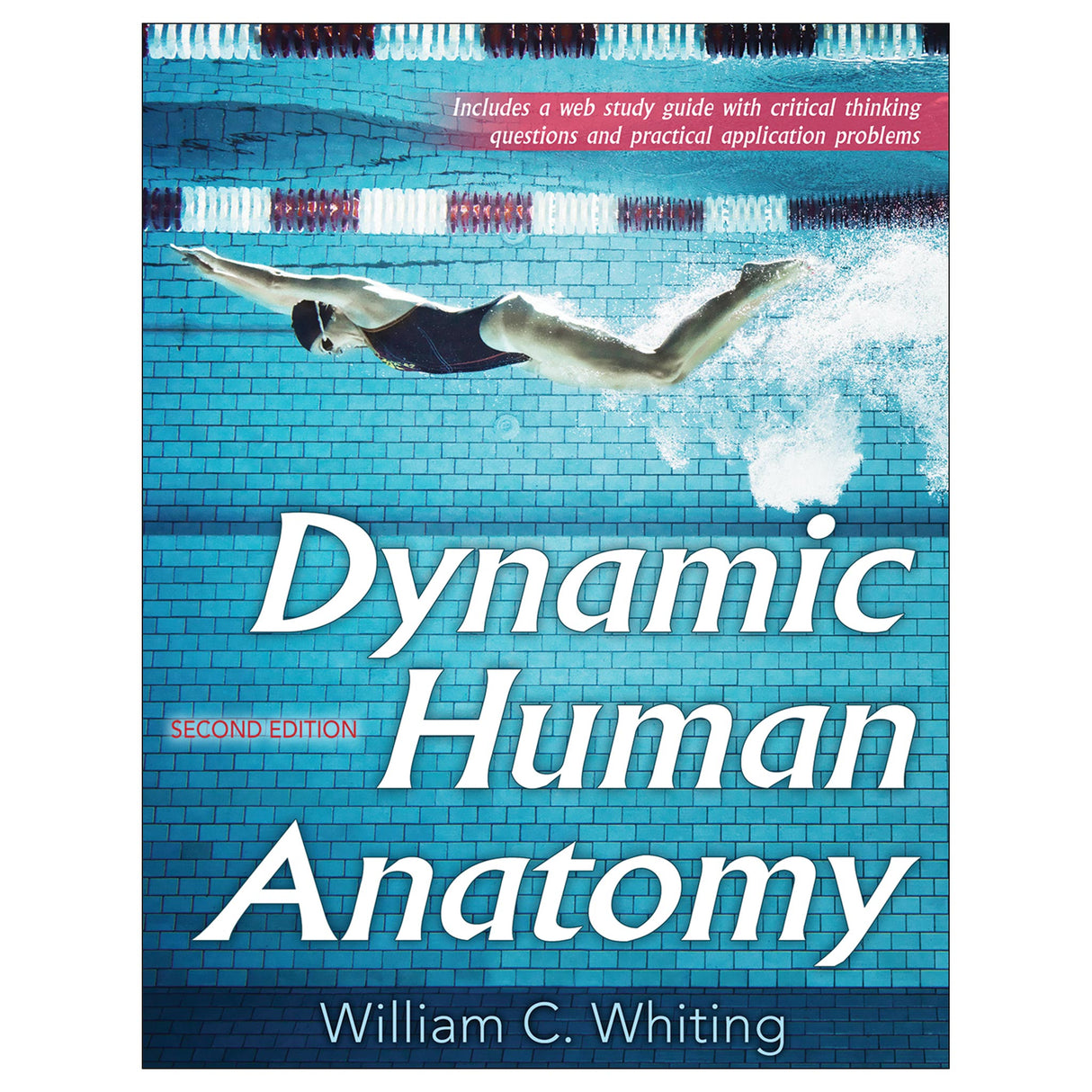Dynamic Human Anatomy 2nd Edition epub With Web Study Guide
Author: William C. Whiting
$103.95 CAD
Access Duration: 10 Years
Dynamic Human Anatomy, Second Edition With Web Study Guide, is back—with a new title, significant new material and learning aids, and the same goals: to cover concepts not found in traditional anatomy texts and to help students apply those concepts.
Formerly titled Dynatomy, the new edition of this introductory to upper-level biomechanics and anatomy text sets itself apart from other texts in this field by connecting biomechanical principles with applications in sports and dance, strength training, work settings, and clinical settings. Dynamic Human Anatomy offers applied dance- and sport-specific information on how the body performs dynamic movement, providing students an understanding of the body’s structure and function as it explores the elegance and complexity of the body’s functional movement anatomy.
New Tools and Learning Aids
Dynamic Human Anatomy comes with many tools and learning aids, including a web study guide and new instructor resources, each featuring new material and tools.
The web study guide offers the following:
• Tables that indicate articulations for the spine and upper and lower extremities
• Tables that list the origin, insertion, action, and innervation for all major muscle groups
• Practice problems that allow students to apply the muscle control formula discussed in chapter 6
• Critical thinking questions
The instructor resources include:
• A presentation package with slides that present the key concepts from the text and can be used for class discussion and demonstration
• An image bank that includes the figures and tables from the book to develop a custom presentation
• An instructor guide that includes a sample syllabus, chapter summaries, lecture outlines, ideas for additional assignments, and answers to the critical thinking questions presented in the web study guide
• A test package that includes 330 questions
Dynamic Human Anatomy also offers a full-color design and learning aids that include an updated glossary, chapter objectives, summaries, and suggested readings. Each chapter has Applying the Concept sidebars, which provide practical examples of concepts, and Research in Mechanics sidebars, which highlight recent research in biomechanics and human movement.
Organized Into Four Parts
Dynamic Human Anatomy is organized into four parts. Part I provides a concise review of relevant anatomical information and neuromechanical concepts. It covers the dynamics of human movement, the essentials of anatomical structure and the organization of the skeletal system. Part II details the essentials of a dynamic approach to movement, including a review of mechanical concepts essential to understanding human movement, the muscle control formula, and topics relevant to movement assessment.
In part III, the focus is on fundamental movements as the chapters examine posture and balance, gait, and basic movement patterns. Part IV explores movement-related aspects for strength and conditioning applications, sport and dance applications, clinical applications, and ergonomic applications.
Brings Anatomy to Life
Dynamic Human Anatomy, Second Edition, explores the potential of the human body to express itself through movement, making it a highly valuable text for students who have taken, or are taking, introductory anatomy and who need a more detailed exposure to concepts in human movement anatomy.
Audience
Undergraduate text for biomechanics, anatomy, or kinesiology courses focusing on human movement in sport. Reference for practitioners in the physical activity and health science fields.
Determine the involved muscles and their action for any joint movement
Ergonomic concepts




Instructor guide. Includes a sample syllabus, chapter summaries, lecture outlines, and more.
Test package. Includes 25 to 30 questions for each chapter.
Presentation package plus image bank. Includes 270 PowerPoint slides that highlight material from the text that instructors can use for class discussion and demonstration. Plus, the image bank includes most of the tables and figures from the text, sorted by chapter, that can be used to develop a customized presentation based on specific course requirements.
The slides in the presentation package can be used directly in PowerPoint or can be printed to make transparencies or handouts for distribution to students. Instructors can easily add, modify, and rearrange the order of the slides as well as search for images based on key words.
Web study guide. Includes interactive practice problems; critical thinking questions; tables that indicate articulations for the spine and upper and lower extremities; and tables that list the origin, insertion, action, and innervation for all major muscle groups.





